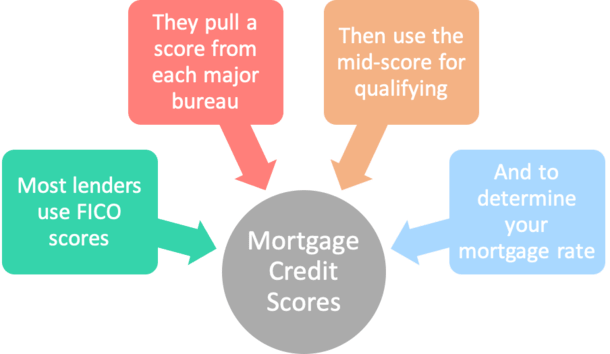According to a 2015 post in the, in 2014, about 12% of the United States HECM reverse home mortgage debtors defaulted on "their real estate tax or property owners insurance" a "fairly high default rate". In the United States, reverse home loan customers can face foreclosure if they do not keep their homes or keep up to date on property owner's insurance and real https://www.businesswire.com estate tax.
On 25 April 2014, FHA modified the HECM age eligibility requirements to extend particular securities to partners younger than age 62. Under the old guidelines, the reverse home loan could just be composed for the partner who was 62 or older. If the older spouse died, the reverse home mortgage balance ended up being due and payable if the more youthful surviving partner was left off of the HECM loan.
This frequently produced a substantial difficulty for partners of departed HECM debtors, so FHA modified the eligibility requirements in Mortgagee Letter 2014-07. Under the new standards, partners who are younger than age 62 at the time of origination maintain the securities provided by the HECM program if the older partner who got the home loan passes away.
For a reverse mortgage to be a practical monetary choice, existing home loan balances normally should be low enough to be settled with the reverse mortgage profits - how do mortgages work in monopoly. However, customers do have the alternative of paying for their existing mortgage balance to get approved for a HECM reverse home loan. The HECM reverse home loan follows the basic FHA eligibility requirements for residential or commercial property type, meaning most 14 household houses, FHA approved condominiums, and PUDs qualify.
Prior to starting the loan process for an FHA/HUD-approved reverse home loan, applicants must take an approved therapy course. An approved counselor should assist explain how reverse home loans work, the monetary and tax ramifications of taking out a reverse home loan, payment alternatives, and costs related to a reverse home mortgage. The counseling is meant to secure borrowers, although the quality of therapy has actually been criticized by groups such as the Consumer Financial Defense Bureau.
Indicators on How To House Mortgages Work You Need To Know

On March 2, 2015, FHA carried out brand-new standards that require reverse mortgage candidates to go through a monetary assessment. Though HECM debtors are not required to make month-to-month home loan payments, FHA wants to ensure they have the financial ability and willingness to keep up with property taxes and house owner's insurance (and any other suitable property charges).
Prior to 2015, a Lending institution could not decline a demand for a HECM as the requirement is age 62+, own a house, and meet initial debt-to-equity requirements. With FA, the loan provider may now require Equity "reserved" rules and sums that make the loan impossible; the very same as a declination letter for bad credit.
Satisfactory credit - All real estate and installation financial obligation payments should have been made on time in the last 12 months; there are no more than two 30-day late home mortgage or installment payments in the previous 24 months, and there is no major negative credit on revolving accounts in the last 12 months.
If no extenuating situations can be documented, the customer might not qualify at all or the lending institution might require a large amount of the primary limitation (if readily available) to be taken into a Life Span Reserve (LESA) for the payment of home charges (property taxes, homeowners insurance, etc.).
The fixed-rate program comes with the security of an interest rate that does not change for the life of the reverse home loan, however the interest rate is normally higher at the start of the loan than an equivalent adjustable-rate HECM. Adjustable-rate reverse home mortgages typically have interest rates that can change on a month-to-month or yearly basis within certain limits.
The How Mortgages Work For Dummies Ideas
The initial rates of interest, or IIR, is the actual note rate at which interest accrues on the outstanding loan balance on an annual basis. For fixed-rate reverse home loans, the IIR can never ever alter. For adjustable-rate reverse mortgages, the IIR can change with program limitations approximately a life time interest rate cap.
The EIR is often various from the real note rate, or IIR. The EIR does not determine the quantity of interest that accumulates on the loan balance (the IIR does that). The total pool of money that a borrower can get from a HECM reverse home mortgage is called the principal limitation (PL), which is calculated based upon the optimum claim quantity (MCA), the age of the youngest debtor, the predicted interest rate (EIR), and a table to PL elements released by HUD.
Most PLs are normally in the range of 50% to 60% of the MCA, however they can in some cases be higher or lower. The table below provides examples of principal limitations for numerous ages and EIRs and a property worth of $250,000. Debtor's age Get more information at origination Anticipated interest rate (EIR) Principal limit aspect (since Aug.
5% 0. 478 $119,500 65 7. 0% 0. 332 $83,000 75 5. 5% 0. 553 $138,250 75 7. 0% 0. 410 $102,500 85 5. 5% 0. 644 $161,000 85 7. 0% 0. 513 $128,250 The principal limit tends to increase with age and reduce as the EIR rises. To put it simply, older debtors tend to receive more cash than younger debtors, but the overall quantity of money available under the HECM program tends to decrease for any ages as interest rates increase.
Any extra profits available can be dispersed to the customer in a number of ways, which will be detailed next. The cash from a reverse mortgage can be dispersed in 4 ways, based upon the debtor's monetary needs and objectives: Lump amount in cash at settlement Regular monthly payment (loan advance) for a set number of years (term) or life (period) Line of credit (similar to a home equity line of credit) Some combination of the above Note that the adjustable-rate HECM provides all of the above payment alternatives, however the fixed-rate HECM only uses lump sum.
How Do Fannie Mae Mortgages Work Fundamentals Explained
This implies that borrowers who go with a HECM line of credit can potentially access to more cash in time than what they at first received at origination. The line of credit development rate is identified by adding 1. 25% to the preliminary interest rate (IIR), which implies the line of credit will grow quicker if the rate of interest on the loan boosts.
Because many customers were taking complete draw swelling sums (typically at the support of lenders) at closing and burning through the cash rapidly, HUD looked for to safeguard borrowers and the viability of the HECM program by limiting the quantity of proceeds that can be accessed within the very first 12 months of the loan.
Any staying readily available proceeds can be accessed after 12 months. If the total mandatory commitments exceed 60% of the principal limitation, then the borrower can draw an extra 10% of the primary limitation if offered. The Housing and Economic Healing Act of 2008 offered HECM mortgagors with the chance to buy a brand-new principal residence with HECM loan proceeds the so-called HECM for Purchase program, reliable January 2009.
